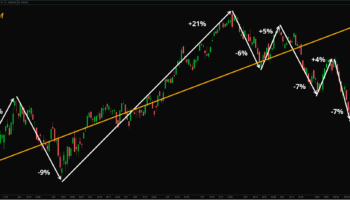
Release of SQX 139 Dev 1 and what’s planned for year 2024
We’d like to announce the release of the new SX 139 Dev 1 version – note that this is a development version for testing, not the final 139 version. Most …
Přejít k obsahu | Přejít k hlavnímu menu | Přejít k vyhledávání
We are thrilled to announce that we released new StrategyQuant build 136. It includes a range of new and improved features.
One of the most exciting new additions is the Stockpicker engine, which allows users to create strategies that trade on groups of stocks, such as whole indexes like the S&P 500. We’ve also introduced the Single-asset Cloud Strategy engine, which allows users to create the same types of strategies for a single symbol, tradable on the AlgoWizard cloud.
In addition to these new engines, we’ve also released a completely redesigned version of the AW Editor in SQ. This new version was rewritten from scratch for maintainability and performance reasons, and it includes a range of new features such as support for multiple files open at the same time and improved work with Random groups and Custom blocks.
Other notable improvements in this update include automatic reloading of the SQX UI after snippet recompilation, the ability to access non-protected history data from snippets through the HistoryDataLoader class, and the addition of new Monte Carlo methods to randomize history OHLC prices.
You can find complete list of improvements and fixes here: https://strategyquant.com/whatsnew/
We have created an introductory course which will guide you through the first steps with this exciting new trading method. To access it just log-in at strategyquant.com website and continue to the course available in your user’s dashboard: https://strategyquant.com/7-1-stockpicking/
(Backtest of the one of the strategies available in the course)
StrategyQuant is the first publicly available software that can generate StockPicking strategies using genetic algorithms without any coding. It is a new functionality, so there might still be some bugs. If you find any problems please report them into our bug reporting system here: https://roadmap.strategyquant.com or just let us know by email and we will check it.
We are also working on new education materials, strategy examples and workflows which can help you create your StockPicking strategies.
This type of strategy that trades a big group of stocks is difficult to trade automatically – with the exception of custom Python scripting it is virtually impossible to implement in classic trading platforms like MetaTrader or MultiChart. This is why we are developing a brand new cloud trading platform which will make trading them easy.
Our Cloud Trader platform is still in development, with the expected release in the first quarter of 2023. You can try Beta version here: beta.algowizard.io
You can also find a lesson where we are showing how to deploy StockPicking strategy live in our new course.
(Lesson: https://strategyquant.com/deploying-strategy-live/).
You will need to perform a new installation of the StrategyQuant in order to run SQX Build 136.
Because the changes of new SQ X are significant, we have decided to disable auto updater and release it as a ZIP file to protect your work in the previous stable release 135.
Note: If you want to uninstall the old version of SQ X, please just delete the SQ X 135 install folder. SQ X does not use Windows registry
It might happen that you will be asked for the license reset after running the new version of StrategyQuant X. You can do it by yourself in your user’s dashboard at https://strategyquant.com/account/

We’d like to announce the release of the new SX 139 Dev 1 version – note that this is a development version for testing, not the final 139 version. Most …

Dive into Algorithmic Trading Without the Coding Headache! Are you intrigued by algorithmic trading but dread the thought of coding? Today marks the beginning of our exciting series that’s about …

In this interview, we catch up with Naoufel, a seasoned trader, to explore his journey through the stormy market of 2023. Naoufel is successful trader with verfied track record who …
Wow! This is really nice! Thanks for the clear explanation
Hello,
Unfortunately, I immediately found an error in the Algowizard.
The SL of orders/market entry (Fixed value in pips) can now be set to a maximum of 1000 pips, if you set more, the value jumps back to 1000. The same on PT.
Hi, thank you for your message. We will test and fix into the next fast update
It’s a great job done! Many thanks to the SQX team!!!
I can test it using the 14-day trial?
If you have troubles using your license, let us know to support@Kevin.com
Missing migration of settings file. Is this also copy and paste?
Which settings do you mean?